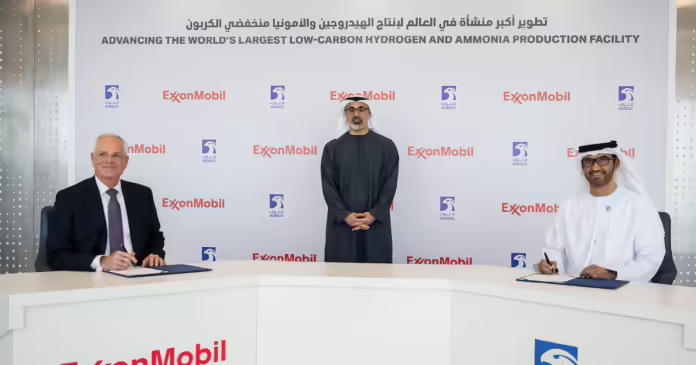Abu Dhabi-based energy company Adnoc has agreed to acquire a 35% equity stake in Exxon Mobil’s (NYSE:XOM) proposed low-carbon hydrogen and ammonia production facility in Baytown, Texas, according to various media reports.
The project is set to become the “world’s largest” of its kind, with a production capacity of up to 1 billion cubic feet daily of blue hydrogen, with about 98% of carbon dioxide removed, as well as more than 1 million tonnes of low-carbon ammonia per year, Adnoc revealed in a statement on Wednesday.
The company will reach a final investment decision for the project in 2025, with operations expected to kick off in 2029.
“This strategic investment is a significant step for Adnoc as we grow our portfolio of lower-carbon energy sources and deliver on our international growth strategy,” said Dr Sultan Al Jaber, Adnoc managing director and group chief executive, as reported by Reuters.
“This is a very significant investment and the partners it is attracting give a sense for the momentum that’s building around this project,” Exxon President of Low Carbon Solutions Dan Ammann told Reuters.
Blue hydrogen is primarily produced from natural gas through a process known as steam reforming, involving combining natural gas with steam with hydrogen generated as the main product while carbon dioxide is produced as a by-product and captured.
Currently, the vast majority of hydrogen demand is supplied by fossil fuel-based steam methane reforming without carbon capture aka gray hydrogen.
The Baytown plant will have access to “cheap” gas from the U.S. Gulf Coast via pipelines.
Blue hydrogen demand is expected to see robust growth in the coming years, a trend likely to continue driving natural gas demand.
According to McKinsey, by 2050, blue hydrogen production could require as much as around 500 billion cubic meters of natural gas (between 10 and 15 percent of global natural gas demand), and capacity to capture and store 750 to 1,000 megatons of CO2.
Nearly all hydrogen consumed today (approximately 90 million tons per annum) is gray hydrogen.
However, demand for gray hydrogen is projected to decline as demand for clean hydrogen rises and the cost of green hydrogen declines.
Source: Oilprice.com
Discover more from Energy News Africa
Subscribe to get the latest posts sent to your email.



